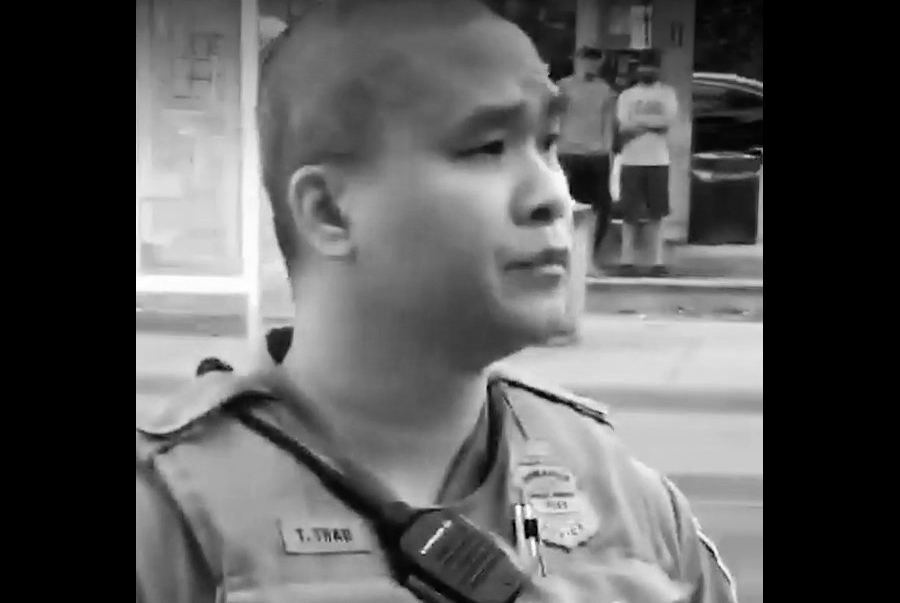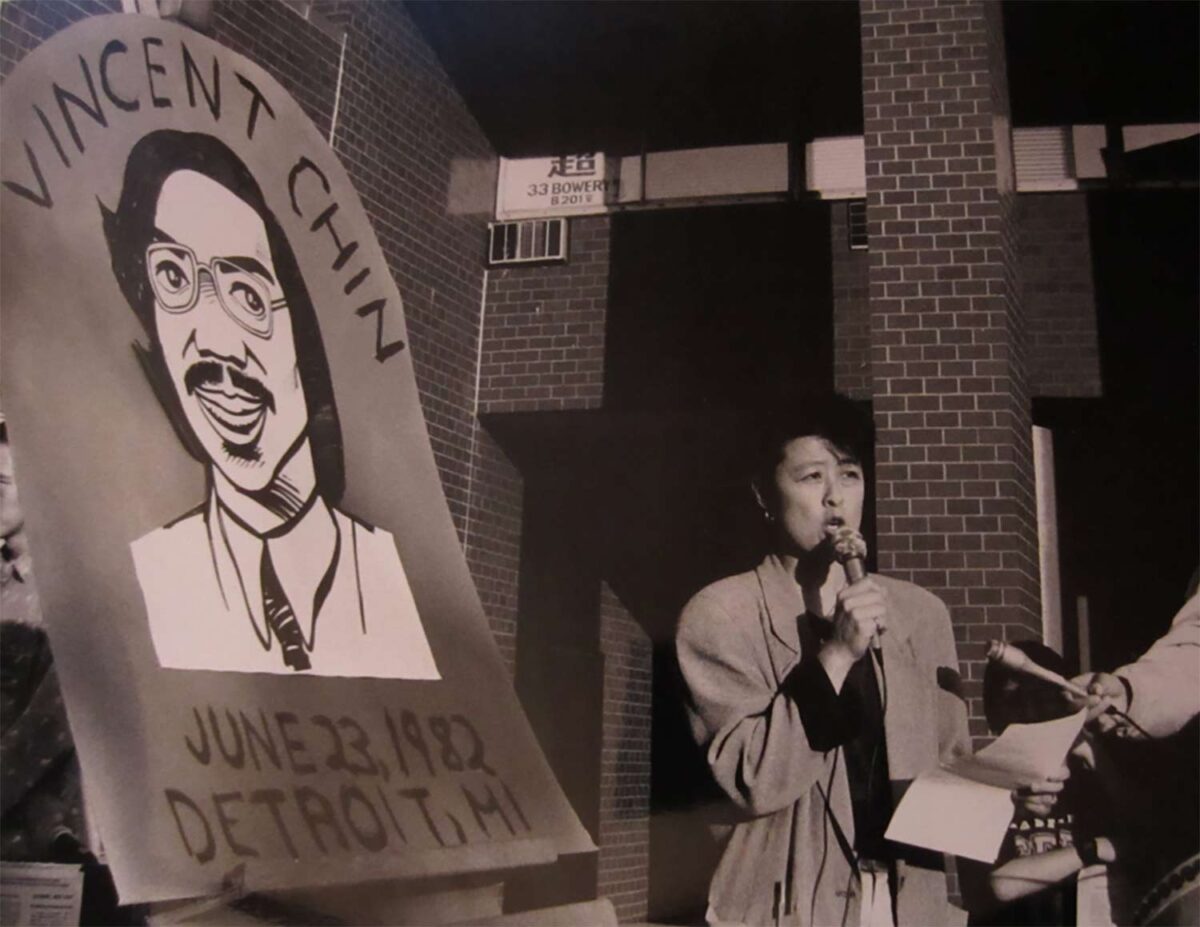In the Vietnamese language, most words have only one syllable. Thus, although English-language speakers usually refer to the country using the multi-syllabic variant “Vietnam,” actual Vietnamese people refer to it as “Việt Nam,” a two-part compound that roughly translates to “Southern folk.” As a matter of personal preference, I configure it as “Viet Nam,” which more closely honors the way that I learned it and the way that my forebears would have favored.
Sometimes I think about the fact that Robert Aaron Long carried out the 2021 Atlanta spa shooting on the fifty-third anniversary of the infamous massacre at Mỹ Lai.
On Saturday 16 March 1968, the United States Army descended upon the village of Sơn Mỹ. They opened fire on the unarmed Vietnamese civilians who populated it. For the next several hours, they had turns gang-raping, torturing, and mutilating the local women and children before executing them.
The soldiers left their victims’ corpses in piles outside of the houses that they set ablaze, on the roadside, in ditches and in wells. By the time it finally departed, that all-consuming army of death had slaughtered five hundred unarmed Vietnamese civilians.
When pressured to investigate, army brass—including future Secretary of State Colin Powell—either could not or would not substantiate rumors of the mass killing.
Colonel Oran K. Henderson, who commanded one of the two companies responsible, glibly excused the killings, explaining that “every unit of brigade size has its Mỹ Lai hidden someplace.” Indeed, that massacre belongs to a long tradition of mass killings and war crimes committed across Asia by the U.S. military. Many of these were, even under the permissive eyes of wartime law, inexcusable, unsanctioned violations carried out without the explicit authorization of military commanders.
Yet countless others—such as the bombings of Hiroshima and Nagasaki, the assault on Highway 80, and Operation Phantom Fury in Fallujah—comprised more legitimate activities that received the direct approval of wartime policymakers, often including the commander-in-chief.
Sometimes I think about the fact that, in the aftermath of the U.S. military’s retreat from Viet Nam and Southeast Asia, white supremacist groups benefited from a huge resurgence in recruitment and activity. Disgruntled white veterans flocked to the Ku Klux Klan and various neo-Nazi organizations, where they passed their military expertise forward to the far right’s future generations. Louis Beam, for instance, transitioned from operating a machine gun in Viet Nam to intimidating Vietnamese refugee fishermen living in Texas. Beam eventually became a key strategist in the Klan. He and his peers had lost on the battlefields of Southeast Asia, but there remained plenty of internal enemies to defeat within their own borders.
The time had come, in his eyes, to “bring [the war] on home.”
Sometimes I think about the fact that, once the United States military crossed the Pacific, it never departed. By the time it invaded the Philippines in 1898, the U.S. had become accustomed to flexing its power as a conqueror. Over the prior century, the country had multiplied its land mass virtually eightfold through a diversity of military actions. Nevertheless, 1898 heralded a critical new stage in the evolution of U.S. empire. Since invading the Philippines, the U.S. has maintained a continuous, ongoing military presence in Asia. Although it relinquished formal political control over the Philippines in 1946, its occupying armies left behind permanent, active military installations on the islands.
That model has become a modus operandi for the empire; it operates bases in Japan and Korea even though they are not, or at least not officially, under military occupation anymore.
Sometimes I think about the fact that the U.S. banned Filipinxs from citizenship even as it welcomed their labor. From 1875 to 1965, Congress strictly regulated and eventually prohibited immigration from the so-called “Asiatic Barred Zone.” In an age of exclusion laws against most Asians, Filipinxs filled a particular niche: They were not good enough to become legal citizens, but, as conquered and colonized people, they carried U.S. passports. They were just barely good enough to sail across the Pacific and break their backs on the labor circuit of farms and canneries that followed the roads from Seattle to Stockton to Delano.
Sometimes I wonder what they said when well-meaning strangers kept asking them, but no, seriously, where are they really from? Whether they ever mustered enough courage to respond, as Chicanx radicals might, that actually, they never crossed the border—the border had crossed them.
Sometimes I think about the fact that “gook,” that heinous slur, likely originated in the Philippines. Soldiers from the United States’ invading army mocked the islanders’ tongues as gibberish. Everything those people said sounded like “goo-goo” to them, and thus they turned into “gooks.” Later generations of soldiers held fast to the term, repurposing it for use against the Haitian, Korean, and Vietnamese peoples whose lands they occupied and whom they sometimes slaughtered in gratuitous acts of spectacular violence. In the meantime, the ghost of “gook” also chased my kin across the sea, where it found a home in the mouths of racist assholes who would spit it at any passersby who looked like me.
In the meantime, the ghost of “gook” also chased my kin across the sea, where it found a home in the mouths of racist assholes who would spit it at any passersby who looked like me.
Sometimes I think about the fact that in 1975 Melvyn Escueta, a real Filipino-American veteran of the U.S. campaign in Viet Nam, drafted a play about Andy Bonifacio, a fictitious Filipino-American veteran of the U.S. campaign in Viet Nam. The latter had terrible nightmares about waging bloody war against enemy Charlies who looked just like him, who looked just like his kin, who were gooks just like he was. Sometimes, when I imagine myself in the boots of such Asian American soldiers, I wonder whether maybe some of them hoped that pulling that trigger might transform them into proper citizens of this country—that it might eventually win them the right to wrap themselves in the stars and stripes.
Maybe if everybody knew how many of their own they had to kill to feel like they belonged here, well-meaning strangers would stop asking them, but no, seriously, where are they really from? Sometimes Melvyn’s nightmares haunt me too.
Sometimes I think about the fact that the world’s first SWAT teams were assembled by Daryl Gates, a Los Angeles policeman who had previously enlisted in the Navy and fought in the Pacific Theater as a seventeen-year-old. Once his paramilitary fighting force was ready, Gates sent them on their first mission: a raid against the Black Panther Party, which triggered a four-hour shootout in the heart of South Central L.A.
Over the half-century since then, SWAT has ingratiated itself into the fabric of urban policing. Now, across the country it storms people’s homes in shock-and-awe raids and invades the people’s streets to keep Black protestors in line. The terrifying technologies they deploy in service of law and order—their M16 assault rifles, their body armor, their armored personnel carriers—were tried, tested, and perfected on the proving grounds of Korea and Viet Nam before they saw action on the streets of Los Angeles or Baltimore or Minneapolis.
Sometimes I think about the fact that James Earl Ray, the triggerman who murdered Martin Luther King Jr. in Memphis, served in the U.S. army for three years. About the fact that two of the three men convicted of the 1963 Birmingham church bombing were also ex-military; one of them, Bobby Frank Cherry, had in fact trained and specialized in demolitions with the Marine Corps. Sometimes I wonder (except I rarely actually wonder, because I suspect that I already know) where these men honed the murderous body of knowledge necessary to pull the trigger on a rifle pointed at another human being, to assemble the sort of bomb that could kill and maim children at church, to exact their will upon this world in such violent ways.
Sometimes I think about the fact that, when Joe Biden signed the COVID-19 Hate Crimes Act into law, the mainstream press lauded him for taking action to protect Asian Americans and indeed all kinds of marginalized populations from violence. Sometimes I wonder if he thinks about who will get gunned down by the one hundred thousand police officers financed under his Safer America Plan. Sometimes I wonder if he thinks about who gets bombed by the war machines financed under his $800 billion defense budget.
Sometimes I think about the fact that my taxes financed these forever-wars from the Philippines and Viet Nam to Afghanistan and Iraq. I sit with it not just in the way that Bernie Sanders or Rashida Tlaib do when they rightly complain that these funds could do more good as part of the budget of a school or a hospital, but also in a more direct sense: After all, every dollar in Box 2 of my W-2 has the terrifying potential to become another bullet in some fool nineteen-year-old’s machine gun, another few miles in an unmanned aerial drone’s fuel tank, another rivet in another stabilizing fin in another missile fired at another people across the Pacific.
Sometimes I wonder how many Louis Beams this country creates every year.
Sometimes, when I hear a story about yet another Asian pedestrian who got ambushed on their way home, I wonder if the culprits later high-five each other over beers bragging about breaking that gook’s nose, and then I wonder where those shits might have learned that word. Sometimes I wonder whether Beam ever felt like he finally completed his mission to “bring [the war] on home.”
Sometimes I wonder how long his war has already been here.
Viet N. Trinh is a historian and an academic. He likes basketball and libraries, and he dislikes racism, imperialism, fascism, and law-and-order politics. He proudly hails from the San Francisco-Oakland Bay Area.
Learn more about Reappropriate’s guest writing program and submit your work here.



